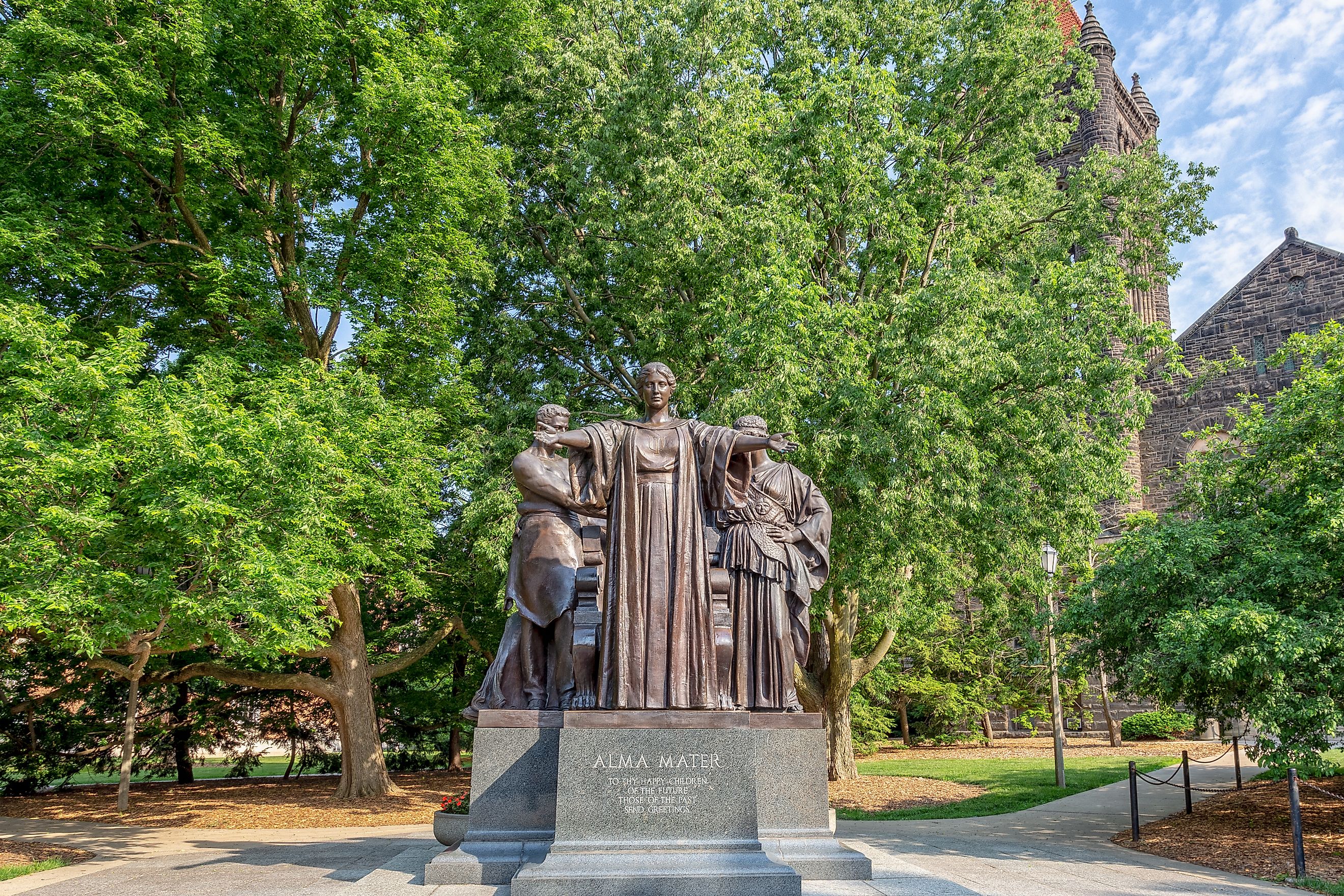
The Best College Town In Illinois
One of the top educational institutes in the Midwest, the University of Illinois Urbana-Champaign (known variously as UIUC, U of I, the University of Illinois, or simply Illinois) has a unique claim to fame. How so? Well, UIUC’s sprawling campus in fact spreads across two distinct communities, ensuring that they share the title of the best college town in the Prairie State. While the historic heart of campus encompassing the Main Quad, along with many academic and administrative buildings, sits primarily on the Urbana side, the campus is divided almost equally between the two cities, with several notable residence halls and athletic and research facilities extend into Champaign. University buildings and land have been distributed in a way that reflects historical development and ongoing expansion. In fact, Champaign and Urbana are so closely associated that they’re considered a twin city, sometimes even referred to by locals (affectionately) as “Chambana,” particularly among students. Regardless of what you choose to call it, there’s little denying Champaign-Urbana deserves its reputation as the best college town in Illinois.
Early History
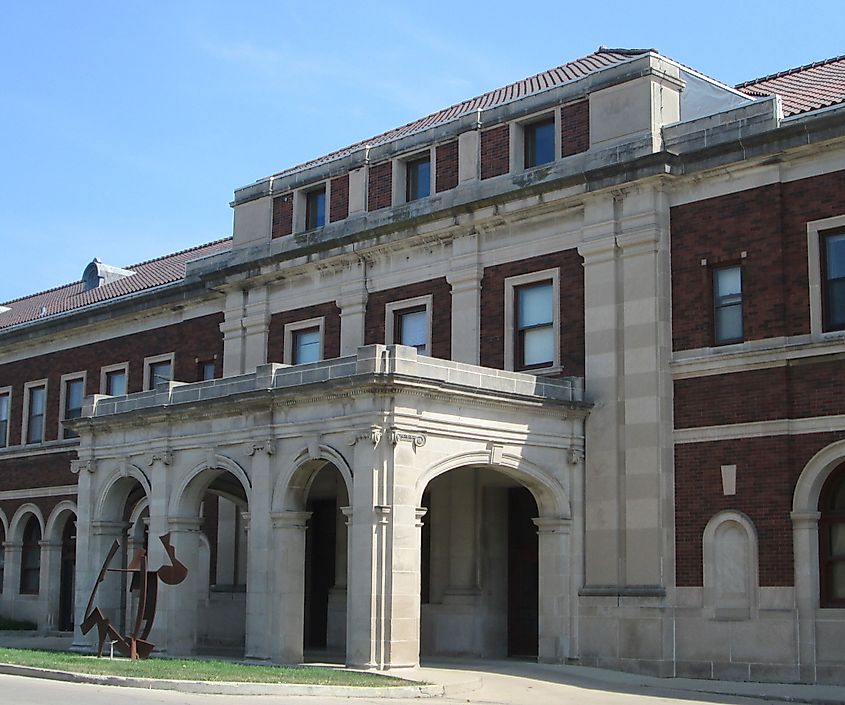
Both towns got their start with the arrival of the Illinois Central Railroad, which positioned Champaign to the west of Urbana and spurred growth in both communities. Urbana, established first, became the county seat in 1833, with Champaign incorporated in 1860. While they developed distinct characters, they remained closely intertwined economically, socially, and culturally. By the late 1860s, the area’s strategic location and enterprising spirit drew plenty of attention when the state sought a site for its new land-grant university, eventually leading to the establishment of the University of Illinois Urbana-Champaign. While their close relationship was, at least initially, a direct result of their shared border, it was the establishment of UIUC in 1867 that forever cemented the bond between these close-knit communities.
Founded under the Morrill Land-Grant Act, a landmark policy aimed at establishing institutions dedicated to agriculture and mechanic arts, the university’s location saw intense debate before a commission settled on Champaign County for its existing infrastructure, supportive local politicians, and donated land. Initially opened as the Illinois Industrial University with John Milton Gregory serving as its first regent (president), it stood out for its mission of blending theoretical and practical education, something that continues to guide UIUC’s philosophy today. The university opened in 1868.
The Making of an Educational Powerhouse
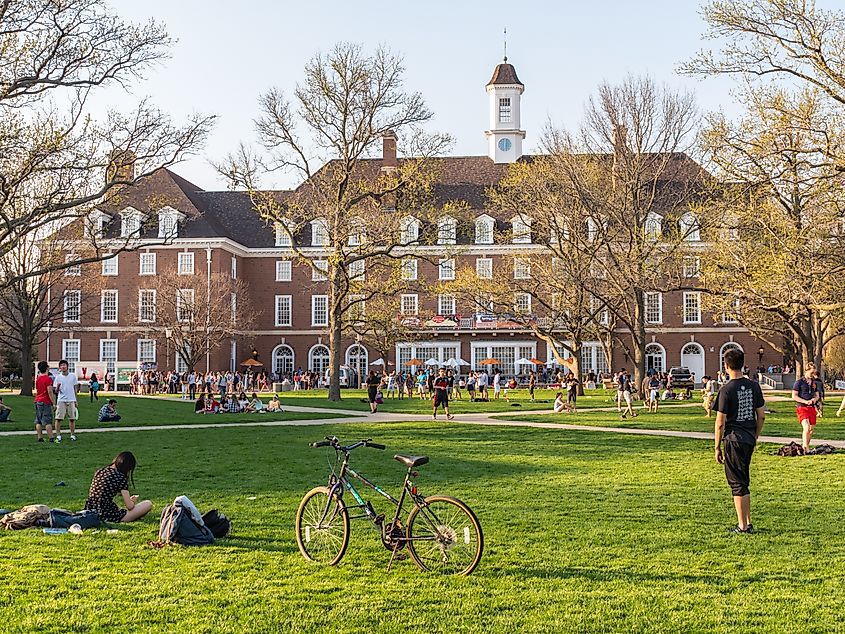
From two faculty members and an initial enrollment of just 77 students in its inaugural year, the university has since grown to a student population of over 59,000 students, making it one of the largest public universities in the US. It’s also one of the largest in terms of acreage. The campus now covers more than 6,300 acres, with hundreds of acres of land that’s used for agricultural research, extension programs, and other facilities. UIUC also ranks among the top public universities in the United States in terms of its academic quality. Standouts include its colleges of engineering, business, liberal arts, and sciences, while strengths in technology and research have also contributed to its consistent placement in national (and global) rankings. Standing testament to the university’s success are the many achievements of its alumni. Notable examples include influential film critic Roger Ebert, who graduated in 1964 before winning a Pulitzer Prize; Marc Andreessen, who co-created the first widely popular web browser, Mosaic, and went on to pioneer the tech industry in Silicon Valley; and the awesome Nick Offerman, the actor recognized for his role as Ron Swanson on television’s "Parks and Recreation."
The Town and Gown Story
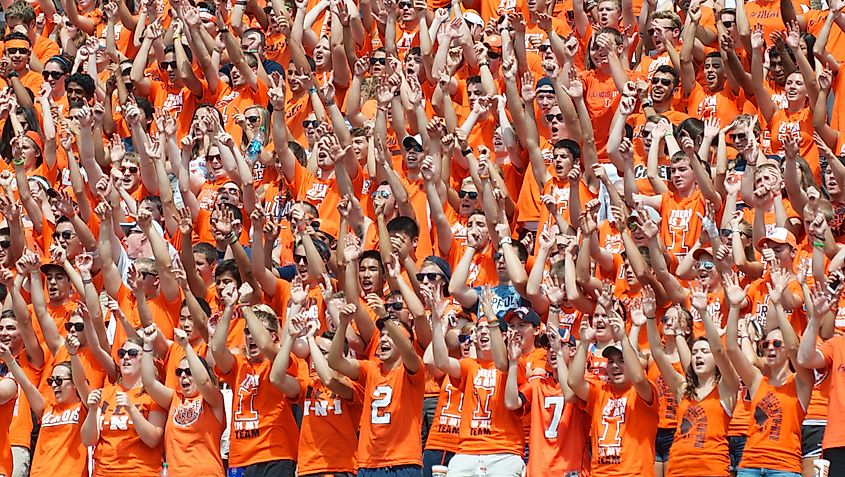
The presence of the University of Illinois has certainly had a positive impact on both Champaign and Urbana. Located roughly midway between Chicago and St. Louis, this shared campus further intertwined the identity of each, bringing together residents, students, professors, and visitors in a continuous flow of academic and community events. Though many speak of “Champaign-Urbana” or “Urbana-Champaign” as though it were a single town, this duality is part of the area’s charm. It has even led to a little friendly rivalry, with residents of each town often omitting the name of their neighbor when referring to “their” university. Rivalries aside, UIUC has been a tremendous economic and cultural driver for both Champaign and Urbana. As the student population grew, local businesses emerged to meet the increasing demands for housing, food, and services. These demands have grown exponentially along with student enrolment and the ensuing growth of faculty and staff numbers, with more than 31,000 people now making a livelihood from the university.
UIUC’s focus on research has also paid huge dividends and has led to the cultivation of a tech and startup corridor in Champaign-Urbana. Thanks to facilities like Research Park, students and professionals alike find resources and mentorship for pioneering new ideas, with the presence of tech firms big and small having roots traceable to the university. The cultural influence of the university has also been substantial with the local arts scene, festivals, and annual events merging campus life with community traditions. The community also rallies around sporting events, particularly when the Fighting Illini football team takes the field at Memorial Stadium attracting alumni, residents, and students together in a spirited show of support for the home team. The university’s Homecoming Parade, held each September, has a similar impact.
Campus Attractions and Landmarks
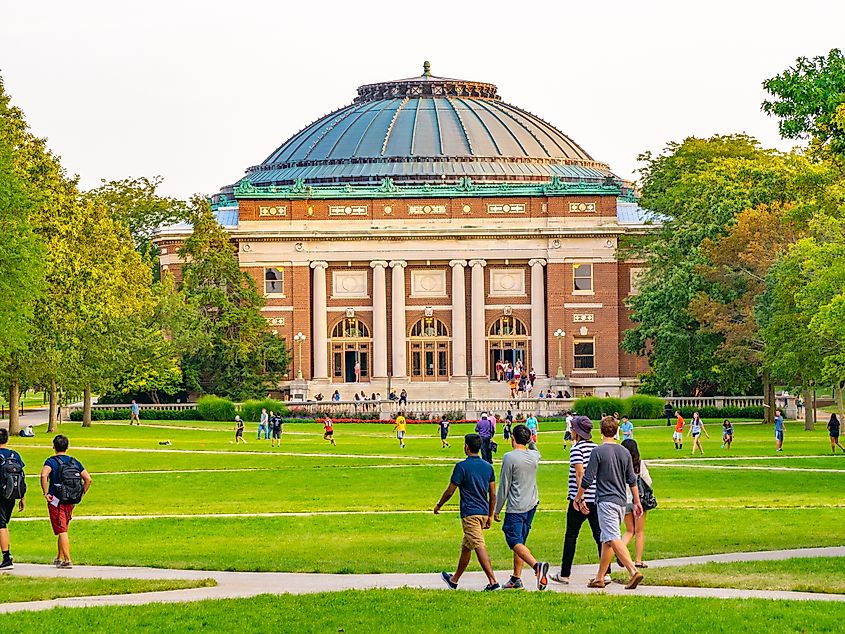
Any visit to Champaign-Urbana should include stopping at the university to see its top attractions. The Main Quad, with its broad walkways and well-kept lawns, serves as the symbolic heart of campus and is especially nice to stroll during the warmer months. Nearby stands the Illini Union, constructed in 1939 and 1940; it remains a hub for social gatherings, student organizations, and dining. It’s also home to the Illini Union Hotel, a great spot for those wanting to stay on campus. Another must-see is the iconic Alma Mater statue. Created by sculptor Lorado Taft in 1929, this bronze figure extends her arms in a welcoming gesture to all. It can be a busy spot, though, with lines of visitors and graduates sometimes queuing for photos in front of the statue. Just steps away, Foellinger Auditorium, an attractive red-brick neoclassical structure, hosts lectures, concerts, and talks by distinguished guests that are often open to the public.
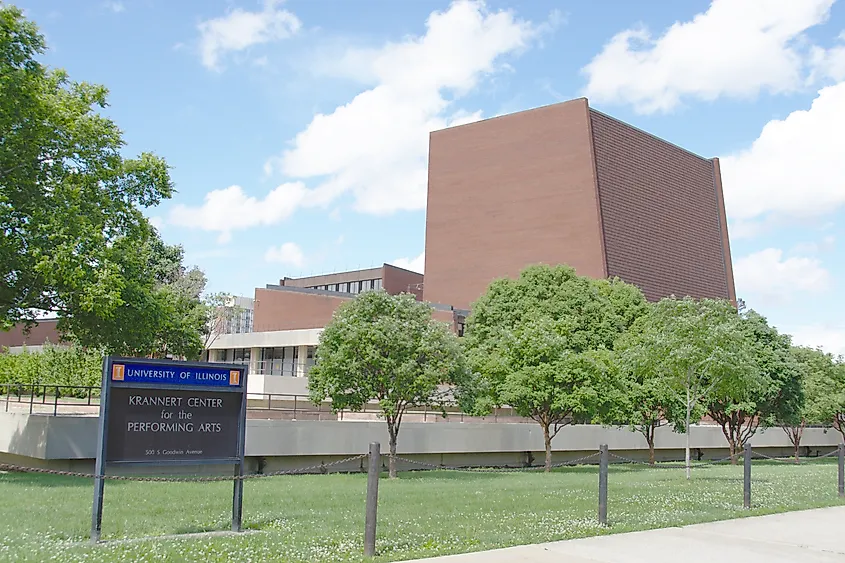
The Krannert Center for the Performing Arts is a must-visit for culture vultures and regularly features plays, dance recitals, and international music concerts. Designed by architect and alumnus Max Abramovitz, it opened in 1969 and remains a key cultural venue for both the university and the broader community. The Spurlock Museum (2002) is another must-visit showcases world cultures with artifacts and exhibits from ancient Egyptian items to modern art installations. If you have an interest in sports (or just want to experience that infectious campus energy on game day), Memorial Stadium is a site to behold. Dedicated in 1924 as a tribute to the Illinois men and women who served in World War I, the stadium has hosted generations of Fighting Illini fans and is known for its imposing columns, a reminder of the stadium’s commemorative origin.
Things To Do in and Around Champaign-Urbana
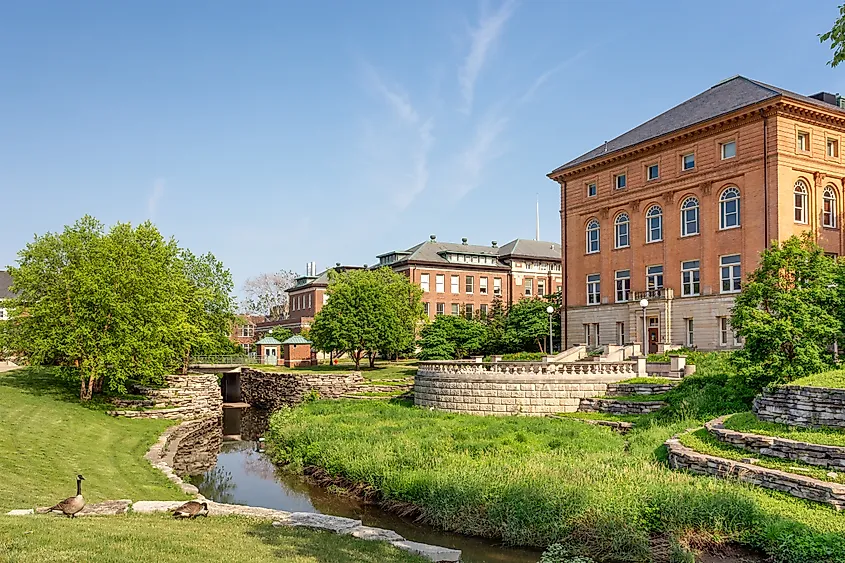
The towns of Champaign and Urbana offer a variety of sightseeing opportunities that complement the university experience. Downtown Champaign makes for a pleasant stroll, while over in Urbana, the Market at the Square is a must-do; it has been operating for decades near the downtown core and continues to draw crowds every Saturday morning from May through October. Nature enthusiasts will want to visit Crystal Lake Park which boasts walking trails, picnic spaces, a large urban forest, and local wildlife. The Anita Purves Nature Center, located at the park’s northern edge, features educational exhibits about regional habitats and the creatures you may have encountered there. For those staying overnight, there are several hotels within walking distance of campus, including TownePlace Suites by Marriott Champaign Urbana/Campustown and the Hampton Inn Champaign/Urbana, both popular choices for parents and visiting alumni.
The Final Word
There’s no denying Champaign-Urbana’s growth and achievements are tightly interwoven with those of the University of Illinois. From its founding days in 1867 to its current standing as one of America’s top public institutions, UIUC has helped transform a pair of prairie towns into places defined by learning, research, and cultural enrichment for nearly 60,000 students, helping “Chambana” earn the title of best college town in Illinois (if not the Midwest) along the way.











